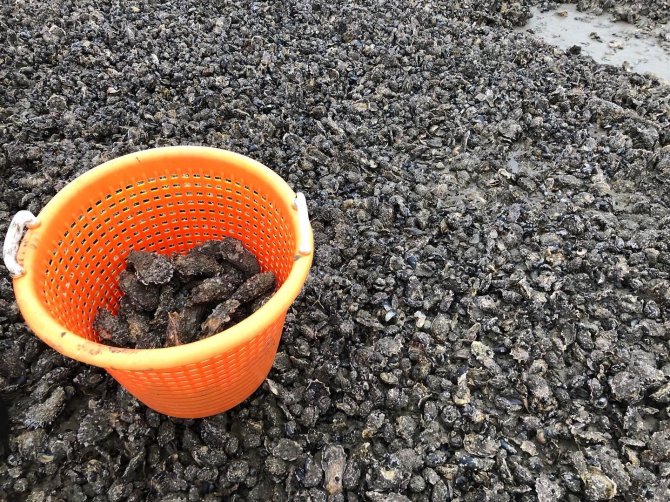
News
Monitoring aquatic genetic resources: where are we now?
In 2022, the Centre for Genetic Resources the Netherlands (CGN) started collecting samples of aquatic species. This year, samples and datasets will be genotyped and analysed. We will also start research on how best to preserve the samples in the long term via cryopreservation.
In 2021, countries worldwide agreed to work on the FAO Global Plan of Action (GPA) for conservation and sustainable use of aquatic genetic resources. This refers to the wild populations of species that are also farmed.
In the Netherlands, several species of fish, shellfish and seaweed are relevant here: mussel, oyster, eel, turbot, pikeperch, sugarweed, sea lettuce, oarweed and wakame. CGN therefore started the Aquatic Genetic Monitoring project in 2022, under the WOT Genetic Resources (WOT-03) 2022-2026. The project collaborates with the WOT Fisheries (WOT-05) of the Centre for Fisheries Research (CVO).
Structure and aim
The aim of the project is to investigate the genetic diversity of wild populations of aquaculture species in Dutch waters. After all, input material for aquaculture is mostly (still) obtained from the wild. Genetic diversity gives us information on the possible mutations and genetic robustness of the wild population(s).
Knowledge about genetic diversity in the wild can possibly help prevent inbreeding. This comes into play when genetic diversity in the wild is too small, or when input material originates too much from the same lineage, leaving other populations unused. In a future scenario, this knowledge can also be used to start breeding programmes (which is currently not yet underway, as input material comes from the wild).
By the end of the term of WOT-03 in 2026, protocols should be available for genetic monitoring of all relevant aquatic species. Periodic monitoring, genotyping and analysis will take place for these species and will provide a picture of the genetic diversity of wild populations of relevant species over time.

What has been done in 2022?
In 2022, the practical methodology for collecting samples of the relevant species for monitoring genetic diversity has been determined. We have now collected the first samples from Dutch waters for mussels, flat oyster, turbot, eel and pikeperch. For instance, 200 mussel samples from four sites in the Oosterschelde and Veerse Meer have been collected.
What will happen in 2023?
From the samples collected, DNA will be isolated and the quality and suitability determined for further analysis and genotyping (mapping the hereditary information). Sample protocols will be revised where necessary.
Protocols for genotyping and data analysis are being set up for the species. Research on cryopreservation of input material will also be started. Again, a separate programme will have to be set up for each species.